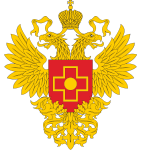
This article is an open access article distributed under the terms and conditions of the Creative Commons Attribution license (CC BY).
REVIEW
Current understanding of epidemiology and pathogenesis of multisystem inflammatory syndrome associated with SARS-CoV-2 in children
1 Pediatric Research and Clinical Center of Infectious Diseases of the Federal Medical Biological Agency, Saint Petersburg, Russia
2 Saint Petersburg State Pediatric Medical University, Saint-Petersburg, Russia
Correspondence should be addressed: Yulia E. Konstantinova
Professora Popova, 9, Saint Petersburg, 197022, Russia; ur.liam@32avonitnatsnok.ailuy
Author contribution: Konstantinova YuE, Alekseeva LA, Glotov OS, Egorova ES — search for literature, manuscript writing and editing, approval of the final version of the article; Vilnitz AA, Bekhtereva MK — concept development, search for literature, manuscript writing and editing, approval of the final version of the article.


